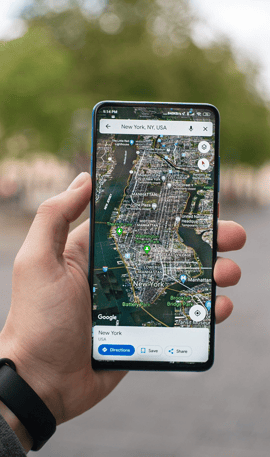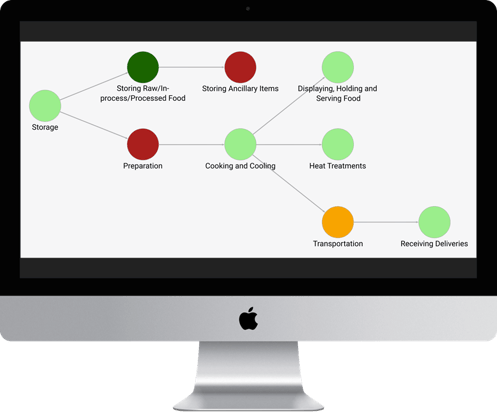A lot has been written about the pros and cons of the Netflix-style interface that Learning Experience Platforms (LXP’s) are deploying, and that Learning Management Systems (LMS’s) are attempting to emulate. And why not? Everybody loves the simplicity and helpfulness of Netflix when they are ready to settle in for a movie or a show.
Netflix is great for binge watching, which certainly has its time and place. It can help you easily find new shows to try out based on your past likes and viewing history. When the Netflix approach is applied to learning, it should help you find a new learning module that looks interesting to review, speeding access to new skill building materials with little effort.
However, suggestions for new learning content to try out is not enough for the purposes of developing and mastering measurable skills that businesses need for success.
Let’s not detract from the sense of enjoyment that many LXP’s are hoping to instill in learners through their Netflix approach. It is possible that learners may start to binge on some new skill-building courses when the suggested topics look interesting. This approach can be very helpful to get learners started on something new.
But learning is more like a journey than a task list, and that requires navigation. When you are on a journey where your goal is to learn a new set of complex skills efficiently and effectively, a suggested list of places to see and things to try won’t cut it as the type of guidance you need to maximize the learning excursion.
A Great Learning Journey Is in the Details
The great memories of most journeys typically occur on the side trips when travelers see the surrounding area in more detail. Leaving these steps to chance for learners to stumble upon is the equivalent of making ‘hope’ a strategy.
Organizations are coming to the realization that their LMS and LXP technologies are not the full story to properly develop organizational skills that are in demand by the business. Guiding the learner on how to master new skills while still allowing each person to keep control of their own steering wheel is what you need to provide a learning GPS.
The details of the journey are not only helpful to the learner. When a learner needs help navigating their way to new skills, the details found in the GPS become incredibly helpful to their training coach or instructor who wants to observe the learner’s path. The learning GPS data will show where they have been, how the trip is going, what is next, and what alternate routes are possible, all which guide the training assistance that is needed.
The Value of the GPS
What the Netflix’s of learning need in order to provide deeper personalization, is a GPS to guide the learner on multiple journeys every day.
What do I mean by this? Let’s talk about what a GPS does to help travelers navigate. With a GPS, your trip becomes more efficient, effective, relevant, and agile, with guidance helping you:

- Know exactly where you are,
- Navigate one neighborhood and even one turn at a time,
- See the detailed path to your precise end point,
- Know when you should slow down and when it is safe to speed up,
- Identify useful places to visit, as well as prior stops to revisit based on goals, previous decisions, likes, and detailed stopping points you have set.
A playlist of content that LMS’s and LXP’s are serving up today misses these important points of guidance by focusing on a barebones list of cities you need to pass through on the way to your destination. It is like navigating a trip with no details regarding the actual roads between cities. The turns are not there, the options are not clear, the landmarks of interest are sparse or non-existent. And there are certainly no live traffic updates. Your ability to share where you are when you need help will be limited to the names of cities you are in or trying to find. The model is incomplete. The planning seems easy and fun, but the execution needs a more detailed map to really make good progress.
Deep Personalization Powered by an Adaptive Learning GPS
A GPS goes deeper. It leverages another level of AI and machine learning to get to know you and how you like to travel. It knows if you like the highway or side streets. And it knows what types of sites you are interested in. It also knows what is happening in real time to allow you to navigate safely and effectively, reaching the destination in the shortest amount of time. In learning, a GPS has the map which can truly guide you, and this is where the Netflix model of learning breaks down.
In a sense, a GPS personalizes the learning journey at a deeper level with real-time intelligence which is what engages learners to develop skills and apply them effectively. The depth of personalization that a next-generation, GPS-oriented learning solution can deliver at scale is only possible with adaptive learning technology. Personalized learning powered by adaptive technology should adapt both the journey and the learning content.
Adapting the Journey
An adaptive system becomes a GPS for learning by understanding each competency area and the corresponding skills at a much more granular level. This deeper understanding allows a detailed knowledge map to be drawn that provides the learner a much more engaging view of the path they should follow. It shows dependencies with varied turns that can be taken. It also integrates much more than a playlist of eLearning modules by incorporating all learning approaches, from self-led to instructor-led and micro-learning in the flow of work all in one map. The adaptive layer guides but does not restrict learners, just like a GPS, allowing for the most direct route as well as more “scenic” pathways to meet varied needs of the individual.
Adapting the Content
As the learner follows the GPS and achieves new milestones, each step on the map can address learning needs in a more personalized way. A GPS will adapt what it shows and offers at each step depending on the situation. Am I on a highway or in a city? Is traffic heavy or light? Do I like visual or audio cues? Is it day or night? Do I travel this road often or is it new? All of these will change what the user experiences without changing the actual map. Likewise in learning, content should adapt to help each employee get the most from the experience. This includes adapting to attributes such as:

-
- The learner’s profile, which can include their language, their job role, or their stated preferences for how they like to learn,
- The learning context, which includes how the learning pertains to each part of the organization, what are the learner’s specific goals, and what technologies each person prefers to use for learning,
- The learner’s previous knowledge or proficiency in the subject matter, including a method for constant reevaluation of the learner’s mastery of the subject,
- The learner’s own engagement, which detects the effort, motivation, and behaviors exhibited during the learning process to ensure learning is delivered in ways that are most successful.
Conclusion
The ability to provide deep personalization of both the learning journey and the learning content at scale is the missing puzzle piece for today’s LMS and LXP-focused training organizations. Adaptive learning systems provide the bridge from one-size-fits-all content and superficial playlists to a personalized learning environment with detailed guidance. And once the bridge to personalized learning is in place, the uses for the learning GPS will start to multiply. Building the bridge from the traditional static approaches to personalized learning sounds like a future workforce training goal, but it is here today in next-generation adaptive learning solutions that are ready to drive performance.
If you would like to hear practical stories on how adaptive learning technology can solve current challenges and improve employee experience, engagement, and performance, please check out this webinar by Realizeit CEO, Manoj Kulkarni: “Adaptive Learning for Today's Workforce – Understand and Chart Your Journey.”
To learn more about how you can provide a Learning GPS to maximize performance, reach out to our Realizeit team to discuss training and learning personalization needs at your organization!